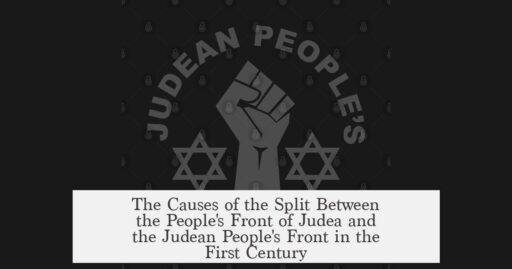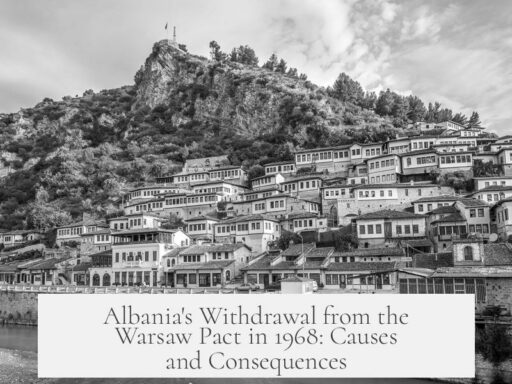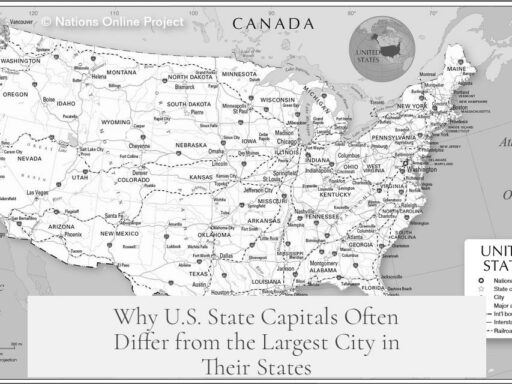The split between the People’s Front of Judea (PFJ) and the Judean People’s Front (JPF) in the first century arose from deep ideological, strategic, and social disagreements. Central to this division were their opposing views on Roman influence, revolutionary identity, and political tactics, despite sharing a common origin and mutual disdain for Roman rule.
Both groups originated from a left-wing faction within the Social Democratic Party of Judea (SDPJ). The SDPJ had become complacent, working within the Roman provincial system and advocating gradual reforms rather than revolution. In response, the SDPJ’s left faction pushed for armed resistance and revolutionary action, which the main party rejected, warning that the conditions for revolution were not yet ripe. This conflict culminated in a split, with the PFJ and JPF emerging as separate entities, both denouncing the SDPJ for abandoning revolutionary principles.
Divergence between the PFJ and JPF grew from distinct ideological foundations. The PFJ focused on empowering the proletarii and urban slaves. They argued these groups formed the revolutionary class capable of overthrowing Roman control. In contrast, the JPF emphasized the peasant class as the primary revolutionary force, recognizing Judea’s rural nature and limited urbanization. Their theory reflected the province’s material realities rather than applying Roman-centered urban revolutionary models.
The parties displayed starkly different attitudes toward Roman infrastructure and culture, intensifying their split. The PFJ acknowledged and even praised several Roman improvements, including aqueducts, sanitation systems, roads, public health, irrigation, and military capabilities that maintained order in Judea. This pragmatic stance acknowledged that not all Roman effects were detrimental. Meanwhile, the JPF maintained a rigid rejection of anything Roman, labeling all Roman contributions as despicable. Despite the PFJ’s grudging recognition of Roman advancements, both groups shared intense hatred of Roman occupation and governance.
Both factions adhered to uncompromising ideologies that prioritized ideological purity over pragmatic unity or political effectiveness. They distrusted and rejected any form of authority—whether Roman, Torah, or priestly—leading to internal fragmentation and hostility, even among allied activists. This led to an escalating emphasis on ideological correctness, where flawed or suspect revolutionary theory was deemed worse than inaction.
- The PFJ refused to engage in dialogue or confront Romans publicly, believing such interactions legitimized Roman imperialism.
- The JPF, conversely, was willing to confront Romans openly, using dialogue and heckling as tactics, even though they viewed Romans with scorn.
The split also reflected differences on specific political issues. For instance, the JPF leadership’s failure to support a plan allowing men to gestate babies in controlled artificial environments caused dissent. Furthermore, both groups fractured further into smaller factions aligned with varying ideologies. The JPF split into Maoist and Judean Popular People’s Front branches, while a Titoist faction broke away from the PFJ to form the Popular Front of Judea. These schisms underscored the intense factionalism born of ideological rigidity.
The groups’ shared roots, coupled with these internal disagreements and social-political realities, made collaboration difficult. Despite their mutual enmity toward Roman authority, contrasting strategies and visions prevented unity. The PFJ’s pragmatic, albeit still hostile, acknowledgement of Roman influence clashed with the JPF’s absolute rejection. The debates over revolutionary classes and the best approach to ending Roman rule further divided them.
| Aspect | People’s Front of Judea (PFJ) | Judean People’s Front (JPF) |
|---|---|---|
| Origin | Left faction split from Social Democratic Party of Judea (SDPJ) | Same left faction, but split over ideology and tactics |
| View on Romans | Recognize Roman improvements; refuse direct engagement | Reject all Roman influence; willing to confront and heckle Romans |
| Revolutionary Base | Proletariat and urban slaves | Peasant class of Judea |
| Ideology | Less radical but uncompromising | Highly radical and linear |
| Political Tactics | Reject dialogue with Romans | Use confrontational dialogue |
| Key Splinters | Popular Front of Judea (Titoist faction) | JPF (Maoist), Judean Popular People’s Front (religion-supporting faction) |
These core differences shaped longstanding distrust and rivalry. The split was neither a mere personal disagreement nor a minor tactical dispute. It reflected fundamental conflicts in ideology, revolutionary strategy, and responses to external conditions. This prevented collective action against Roman rule, ultimately weakening Judean resistance.
- The split stems from divergent views on Roman contributions and engagement.
- Ideological purity and uncompromising stances fuel internal factionalism.
- Differences in identifying the revolutionary class show social and practical divides.
- Both groups’ origins trace to left-wing dissent within the SDPJ.
- Multiple subsequent factions emerged, further fragmenting Judean revolutionary efforts.
What Led to the Split Between the People’s Front of Judea and the Judean People’s Front in the First Century?
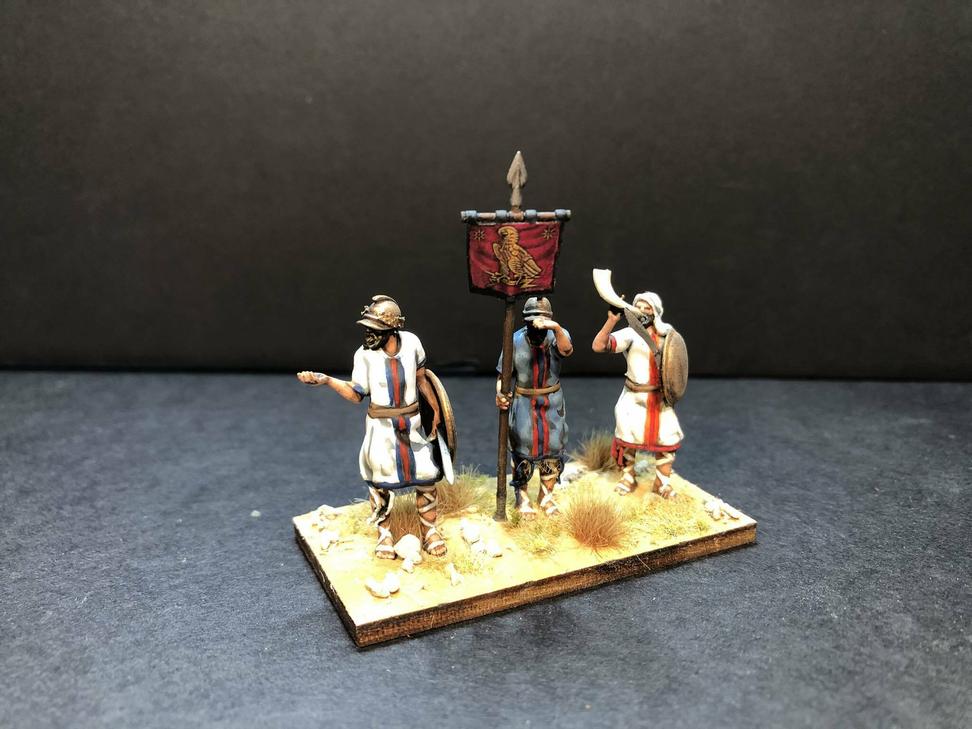
The split between the People’s Front of Judea (PFJ) and the Judean People’s Front (JPF) was primarily caused by their differing views on Roman influence, ideological inflexibility, and conflicting revolutionary goals despite sharing a common origin from the Social Democratic Party of Judea (SDPJ). Let’s unravel this tangled historical rift step-by-step, while keeping our toga firmly in place.
At first glance, it might seem like splitting hairs, but the rift between the two groups reveals deeper cracks related to power, ideology, and practical politics during Roman-occupied Judea.
The Origin Story: From Complacency to Revolutionary Factionalism
Both the PFJ and JPF trace back to the Social Democratic Party of Judea. For a time, SDPJ leaned towards working with the Roman provincial system to gain small improvements. This pragmatic approach slowly bred complacency, forgetting the party’s revolutionary roots.
Out of frustration, the more left-leaning faction rebelled. They sought armed resistance against Rome. But the majority at SDPJ argued that “revolutionary conditions” weren’t ripe. So, the agitators broke away, branding the SDPJ as “social fasces-ists” — political staleness wrapped in trust in the status quo. This split planted the seeds for further fragmentation.
Roman Influence: To Admire or To Abhor?
Now, the PFJ took a complicated stand. Yes, they hated Roman rule — with a passion worthy of any oppressed people. Yet, they openly acknowledged Roman achievements. Aqueducts, sanitation, roads, irrigation, medicine, and even the fine Roman wine received grudging nods. They admitted Roman forces, though hated, were among the only effective groups maintaining public order amid chaos.
In stark contrast, the Judean People’s Front put on ideological blinders. To them, “Roman” was synonymous with “despicable.” No exceptions allowed—not even for laudable municipal advancements. That hardline stance meant they refused to acknowledge anything positive coming out of Rome. Black and white, no gray zones.
Despite these differences, both groups spent a lot of effort expressing disdain for the Roman occupiers. They just did it with different levels of grudging respect and strategic acceptance.
Revolutionary Class Debates: Who Will Lead the Charge?
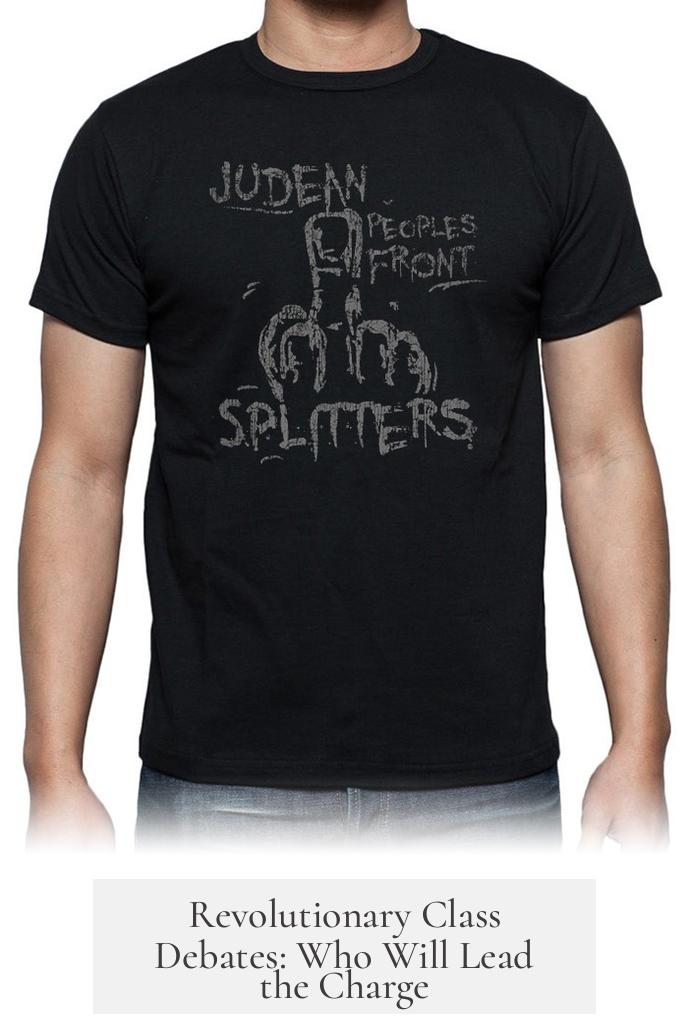
This rift extends to whom each group believed should be the vanguard of revolution. The PFJ, influenced by Marxist theory, championed the proletariat and urban slaves—the class of people with little property. They thought these groups would unite and overthrow the oppressive structures.
The JPF argued that Judea’s conditions weren’t Rome-like urban chaos but a largely agrarian society. Hence, their revolutionary class was the peasant farmers. They put their hopes into the radicalization and mobilization of the rural majority, who they thought were the real engine for revolt.
It’s a classic “city versus countryside” revolutionary split. Such ideological tennis matches have fractured many movements across history.
From Ideology to Purity Tests: The Fight Against Compromise
Both factions were fanatical about ideological purity. They distrusted any authority—Roman, Torah, or priestly. This distrust fed intense internal suspicion, especially toward anyone appearing too compliant, even fellow revolutionaries.
Actions driven by “improper” ideology were seen as worse than doing nothing. It meant they often prioritized ideological purity over effective unity or practical action. This attitude created a political minefield where alliances were fragile and disputes could explode at any moment.
Further Fragmentation: The Splintering Continues
Even after the main split, the factions splintered further. The Judean People’s Front fractured into a Maoist-leaning subgroup and the Judean Popular People’s Front, which disagreed mainly on religion-related issues.
The People’s Front of Judea wasn’t immune either. A faction broke off advocating the revolutionary theories of Josip Broz Tito, creating the Popular Front of Judea. It’s a family reunion nobody enjoyed.
Men Gestating Babies? Seriously?
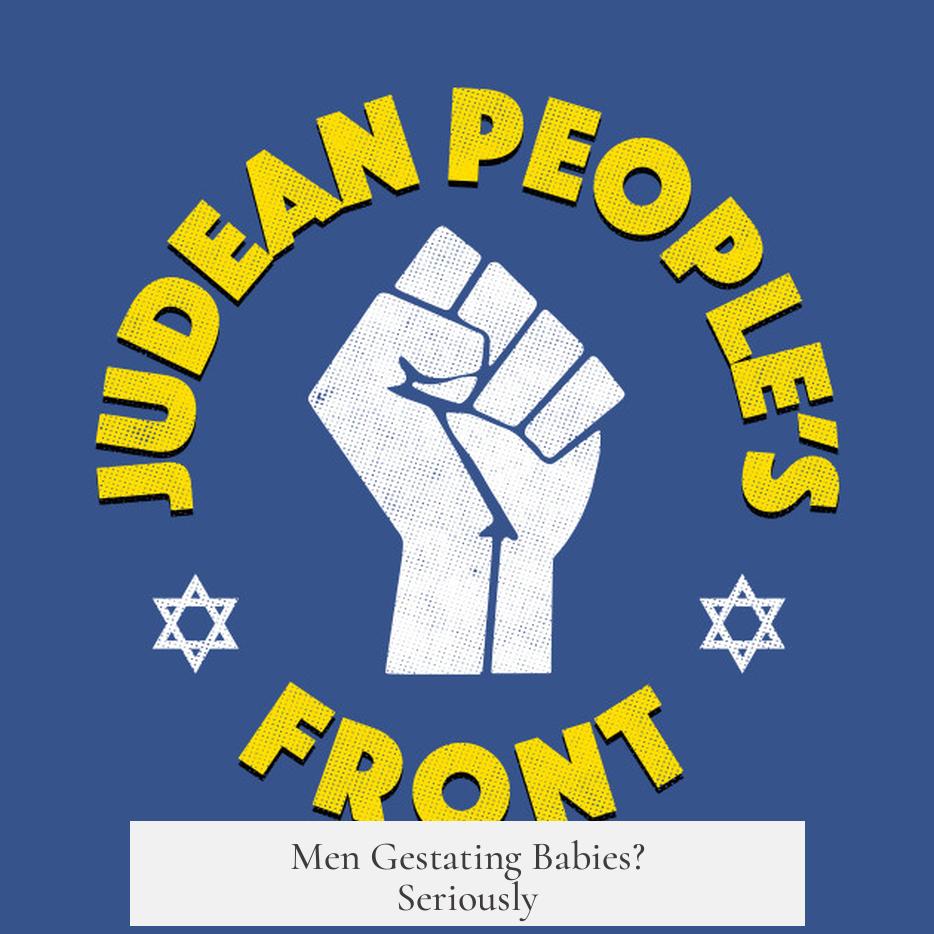
Adding a bizarre piece to the puzzle, the JPF leadership reportedly failed to support a plan to let men gestate babies in a box. Yep, you read that right. While it might sound like mad science fiction, it underlines the ideological stubbornness and social policies that could alienate members within these factions.
Engagement with Romans: Conversation vs. Boycott
The JPF surprisingly entertained conversations with Roman officials like Bickus Dickus to discuss the horrors of the empire and even label Romans as “wankers” who should leave. Though laced with sharp rhetoric, this openness showed a willingness to engage politically with enemies.
The PFJ took a sterner line, refusing any interaction with Romans. They feared dialogue would legitimize Roman rule and hinder their cause. So, heckling from afar was their chosen weapon instead.
What Can Modern Movements Learn from This?
Here’s a thought: history is full of movements that fracture over purity tests and divergent strategic views. The PFJ and JPF split illustrates how revolutionary causes can falter when ideological purity outweighs practical collaboration. Is sticking to absolute ideals worth a movement’s fragmentation? That’s a question modern activists and political groups still wrestle with.
Moreover, the split shows the challenge in balancing ideological principles with acceptance of practical realities. Even despised systems like the Roman occupation had useful elements. Ignoring these can limit a movement’s effectiveness.
And finally, engagement—or refusal to engage—with opposing forces shapes political discourse deeply. Dialogue may seem like a compromise to purists but can open channels for change.
In Summary
So, what led to the split between the People’s Front of Judea and the Judean People’s Front? Simply put, their differences over Roman influence, uncompromising ideologies, revolution-class allegiance, and distrust of any authority created an irreconcilable rift that led to their factional divide.
Both were born from frustrated revolutionaries away from the complacent SDPJ, but each forged divergent paths based on contrasting views about Rome’s role, who should lead the revolution, and how strictly to enforce ideological purity. Their ruptures only deepened over time with further splinters and political posturing. In the messy theater of first-century Judea, principle over pragmatism spelled division.
But hey, for those familiar with factional politics, this story sounds eerily familiar. Sometimes the biggest enemies come from within.
What core ideological difference caused the split between the People’s Front of Judea and the Judean People’s Front?
The People’s Front of Judea saw the proletariat and urban slaves as the revolutionary class. The Judean People’s Front focused on radicalizing the Judean peasant class due to the province’s rural conditions.
How did their views on Roman achievements contribute to the split?
The PFJ acknowledged some Roman public works and order despite hating Roman rule. The JPF rejected any praise for Romans, viewing all Roman influence as negative.
What role did their origins in the Social Democratic Party of Judea play in their division?
Both parties split from the SDPJ’s left faction, which pushed for armed resistance. The dominant SDPJ faction stayed moderate, prompting the left to break away and form the PFJ and JPF.
Did internal splits affect these groups after their initial division?
Yes. The JPF divided further into Maoist and Popular People’s Front factions, while the PFJ had a splinter group called the Popular Front of Judea, showing ongoing factionalism.
How did attitudes toward authority shape the conflict between these groups?
Both distrusted any authority, including religious and political leaders, even among each other. They valued ideological purity over unity, sometimes refusing action if ideology wasn’t perfect.
